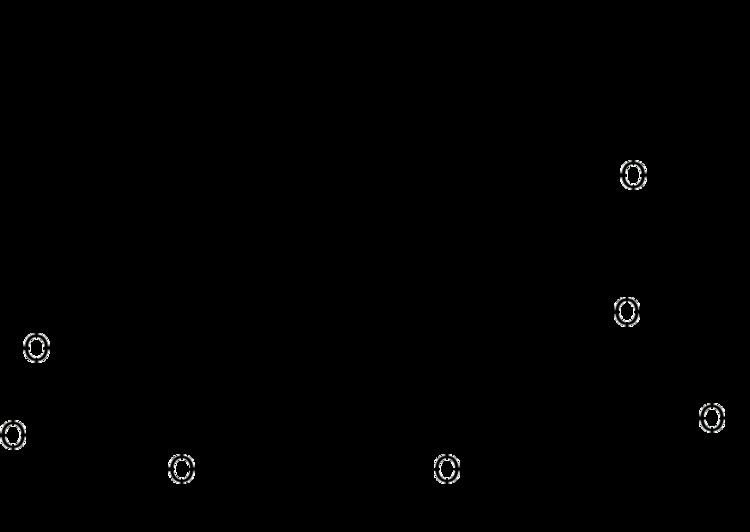Formula C35H64O7 | ||
 | ||
Annonacin is a neurotoxic chemical compound found in some fruits such as the paw paw (custard apple), soursop, and others from the family Annonaceae. It is a member of the class of compounds known as acetogenins.
Contents
Neurotoxicity
Annonacin is a neurotoxin that is believed to be responsible for the incidence of atypical parkinsonism in the Caribbean island of Guadeloupe where consumption of soursop and pawpaw is common. Studies in rodents indicates that consumption of annonacin (3.8 and 7.6 mg per kg per day for 28 days) caused brain lesions consistent with Parkinson's disease.
Along with other acetogenins, annonacin blocks mitochondrial complex I (NADH-dehydrogenase), which is responsible for the conversion of NADH to NAD+ and the build-up of a proton gradient over the mitochondrial inner membrane. This effectively disables a cell's ability to generate ATP via an oxidative pathway, ultimately forcing a cell into apoptosis or necrosis.
Biosynthesis
Based on basic polyketide synthesis, the biosynthesis of annonacin is likely accomplished by a modular polyketide synthase (PKS). Not much is known other than this about the domains responsible for the biosynthesis annonacin. The biosynthesis likely involves the use of 17 modules consisting of a number of enzymes commonly found in PKS. These include the acyl carrier protein (ACP), acetyl transferase (AT), ketosynthase (KS), malonyl transferase (MT; which can come carrying a variety of functionalities), ketoreductase (KR), dehydratase (DH), and enoyl reductase (ER). An example of the possible modular biosynthetic pathway detailing the combination of these enzymes and the subsequent modules can be seen in the figure below.
